Aidan Maguire farms 46ha of grassland outside Navan, Co Meath, where he operates a dairy calf-to-beef system and was the 2021 winner of the Teagasc Drystock Grassland Farmer of the Year award. Over the last number of years, the farm has been transformed in terms of system performance and financial performance.
Speaking at the Teagasc Grass10 farm walk on Wednesday 31 August, the farm’s local Teagasc B&T adviser, David Argue, outlined the extent of the transformation.
“In 2018, the farm was losing €28/ha. In 2021, it is returning a net profit of over €800/ha before support payments or land and labour are taken into account,” he said.
This is being achieved through a high output from the farm at over 1,500kg liveweight/ha annually.
However, high output doesn’t always mean high profit levels. The reason Aidan is able to have a good level of profit is because he is growing the majority of the feed needed for stock on-farm, the vast majority of which is in the form of grazed grass.
Measuring grass
Addressing the crowd on the evening, Aidan outlined: “When cattle are in the farmyard, they are costing you money – out in the field is where they are making money for you. Starting to measure the grass was a turning point for me on the farm. It always seemed to be boom or bust here before that. I was either baling paddocks all the time or running out of grass for the stock I had.
“It took a while to come in on it and there were mistakes made at the beginning, but I started to get my head around the figures that were being used such as the average farm cover and the daily growth figure. I knew my demand for grass each day, so then it was just a case of matching one to the other.
“Measuring the grass for me gave me the confidence to know – OK I have a problem coming down the road in two or three weeks, it’s time to take action, or likewise I’d know that there was sufficient growth that I could take out a couple of paddocks that were starting to get strong.”
Teagasc Grass10 adviser Joseph Dunphy outlined that the average drystock farmer that measures grass enters just shy of 20 farm walks per year on average. In 2021, Aidan carried out almost 60 farm walks.
Commenting on this, Aidan said: “I’d be walking the farm twice a week during the summer months – for me, it is a critical thing to do, especially in a year like this because you can see how the situation is changing every few days.
“We have had to take action here by housing 40 bullocks and feeding a further 10 heifers at grass to reduce demand. But it has meant that the rest of the stock have sufficient grass.”
Calf sourcing
Another big change on the farm since entering the programme was where calves were sourced. Previously, Aidan was sourcing from multiple farms, which put a disease pressure on calves when mixed on the farm after arrival.
Now, all calves are sourced from three herds that Aidan has built up a relationship with over the years.
“For me, it is hard to look past the Friesian bullock. For the price you have to pay for the beef calf, it is hard to make it work. OK, the Friesian is going to be on-farm that bit longer, but they will weigh and tend to grade similar to the beef-cross animal,” Aidan said.
Stock performance
Animals are performing every day of their lives on the Maguire farm. Over the first grazing season, they are averaging 0.82kg/day on grass plus 1kg/day concentrate. This is the first year all calves have been fed meal throughout the first season.
“Last year, I fed a batch of the lightest calves and they really performed well so I said I would do it again this year. With the way grass supplies were, there wasn’t the opportunity to remove the meal to the heavier calves, so I have just fed it all the way through.
“This is an extra job every day and will come at extra cost, but if I was to get that performance during winter, I would have to be feeding two or three kilos of meal, so I think it is worth it,” Aidan said.
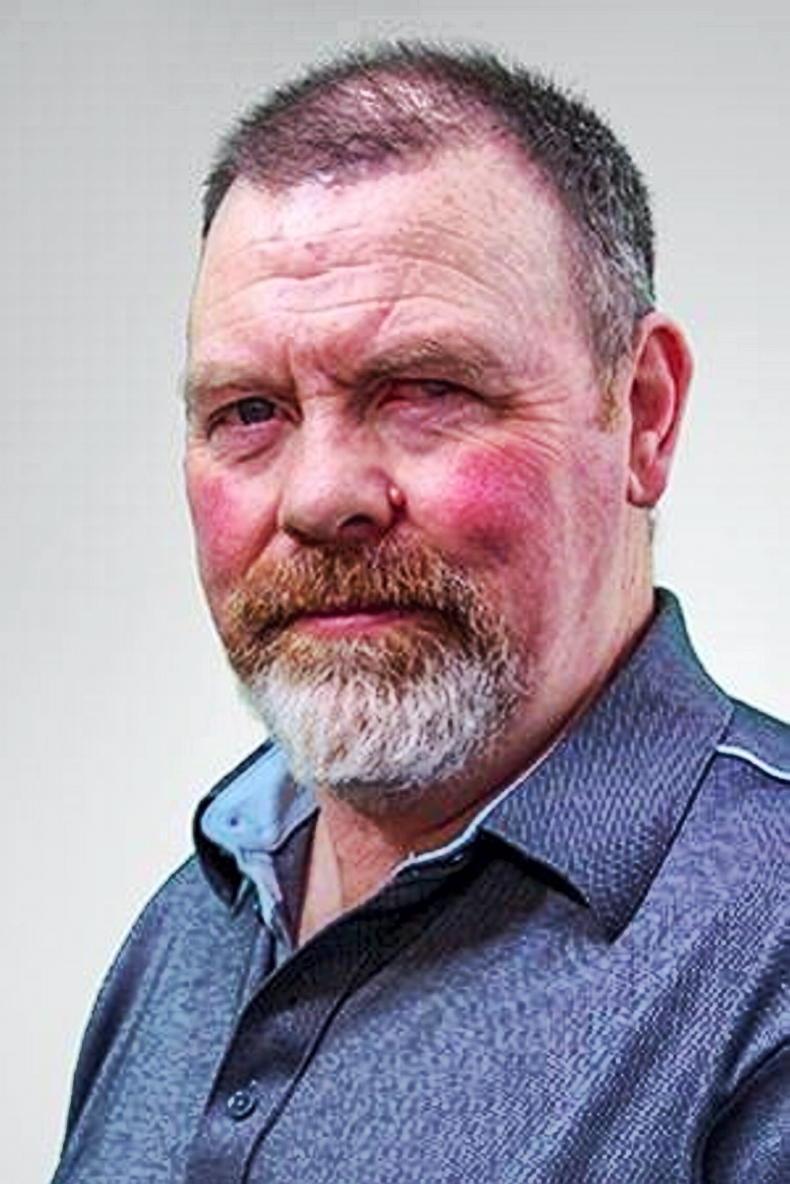
Aidan Maguire.
Stock are typically housed in mid-November and are fed 72DMD silage plus 1kg concentrate until early January and average 0.7kg/day liveweight gain during this period.
Early turnout plays a huge role on the farm, with the aim of getting some stock out by the end of January in an on-off grazing system. To make this work, stock need to be going out to the driest paddocks and need to be hungry when they go out so that they get their heads down to graze straight away. They are then housed four hours later.
While this sounds like a lot of work, Aidan has the farm set up so that all moving of stock can be done by one person.
A second farm roadway was introduced this year to help facilitate stock movement and paddocks were redesigned to make things easier. In total, there are 33 paddocks on the home block of land at just over 1ha/paddock.
Future plans
Although the farm system is now well established, Aidan still has ambitious plan for the future. These include sowing more clover on the farm. There was 5ac of a red clover mix sown in April and it has so far yielded 10 bales/ac. Aidan is happy with how it is performing.
“The red clover ground got three bags of 10-10-20 at sowing and two applications of 2,500gal/ac of slurry and nothing else all year. I see that as a way of reducing nitrogen input on the farm.
“I plan to reseed all the top paddocks with a red clover mix next year. Even if the red clover dies out after a couple of years, we have the option to oversow white clover and have a good grazing sward for years.”
Aidan’s son Luke is also heavily involved with the farm and there are plans in place for the pair to enter a farm partnership in 2023.
43ha grassland.Buying around 130-140 calves each year 75% spring-born, 75% males.Mostly Friesian bullocks – some Hereford.Heifers finished at 20 months – 266kg carcase.Bullocks finished at 24 months – 307kg carcase.Soil fertility is excellent.Grew >13tDM/ha grass in 2021.140kg chemical N/ha 2022 – 22% reduction on 2021.
Aidan Maguire farms 46ha of grassland outside Navan, Co Meath, where he operates a dairy calf-to-beef system and was the 2021 winner of the Teagasc Drystock Grassland Farmer of the Year award. Over the last number of years, the farm has been transformed in terms of system performance and financial performance.
Speaking at the Teagasc Grass10 farm walk on Wednesday 31 August, the farm’s local Teagasc B&T adviser, David Argue, outlined the extent of the transformation.
“In 2018, the farm was losing €28/ha. In 2021, it is returning a net profit of over €800/ha before support payments or land and labour are taken into account,” he said.
This is being achieved through a high output from the farm at over 1,500kg liveweight/ha annually.
However, high output doesn’t always mean high profit levels. The reason Aidan is able to have a good level of profit is because he is growing the majority of the feed needed for stock on-farm, the vast majority of which is in the form of grazed grass.
Measuring grass
Addressing the crowd on the evening, Aidan outlined: “When cattle are in the farmyard, they are costing you money – out in the field is where they are making money for you. Starting to measure the grass was a turning point for me on the farm. It always seemed to be boom or bust here before that. I was either baling paddocks all the time or running out of grass for the stock I had.
“It took a while to come in on it and there were mistakes made at the beginning, but I started to get my head around the figures that were being used such as the average farm cover and the daily growth figure. I knew my demand for grass each day, so then it was just a case of matching one to the other.
“Measuring the grass for me gave me the confidence to know – OK I have a problem coming down the road in two or three weeks, it’s time to take action, or likewise I’d know that there was sufficient growth that I could take out a couple of paddocks that were starting to get strong.”
Teagasc Grass10 adviser Joseph Dunphy outlined that the average drystock farmer that measures grass enters just shy of 20 farm walks per year on average. In 2021, Aidan carried out almost 60 farm walks.
Commenting on this, Aidan said: “I’d be walking the farm twice a week during the summer months – for me, it is a critical thing to do, especially in a year like this because you can see how the situation is changing every few days.
“We have had to take action here by housing 40 bullocks and feeding a further 10 heifers at grass to reduce demand. But it has meant that the rest of the stock have sufficient grass.”
Calf sourcing
Another big change on the farm since entering the programme was where calves were sourced. Previously, Aidan was sourcing from multiple farms, which put a disease pressure on calves when mixed on the farm after arrival.
Now, all calves are sourced from three herds that Aidan has built up a relationship with over the years.
“For me, it is hard to look past the Friesian bullock. For the price you have to pay for the beef calf, it is hard to make it work. OK, the Friesian is going to be on-farm that bit longer, but they will weigh and tend to grade similar to the beef-cross animal,” Aidan said.
Stock performance
Animals are performing every day of their lives on the Maguire farm. Over the first grazing season, they are averaging 0.82kg/day on grass plus 1kg/day concentrate. This is the first year all calves have been fed meal throughout the first season.
“Last year, I fed a batch of the lightest calves and they really performed well so I said I would do it again this year. With the way grass supplies were, there wasn’t the opportunity to remove the meal to the heavier calves, so I have just fed it all the way through.
“This is an extra job every day and will come at extra cost, but if I was to get that performance during winter, I would have to be feeding two or three kilos of meal, so I think it is worth it,” Aidan said.

Aidan Maguire.
Stock are typically housed in mid-November and are fed 72DMD silage plus 1kg concentrate until early January and average 0.7kg/day liveweight gain during this period.
Early turnout plays a huge role on the farm, with the aim of getting some stock out by the end of January in an on-off grazing system. To make this work, stock need to be going out to the driest paddocks and need to be hungry when they go out so that they get their heads down to graze straight away. They are then housed four hours later.
While this sounds like a lot of work, Aidan has the farm set up so that all moving of stock can be done by one person.
A second farm roadway was introduced this year to help facilitate stock movement and paddocks were redesigned to make things easier. In total, there are 33 paddocks on the home block of land at just over 1ha/paddock.
Future plans
Although the farm system is now well established, Aidan still has ambitious plan for the future. These include sowing more clover on the farm. There was 5ac of a red clover mix sown in April and it has so far yielded 10 bales/ac. Aidan is happy with how it is performing.
“The red clover ground got three bags of 10-10-20 at sowing and two applications of 2,500gal/ac of slurry and nothing else all year. I see that as a way of reducing nitrogen input on the farm.
“I plan to reseed all the top paddocks with a red clover mix next year. Even if the red clover dies out after a couple of years, we have the option to oversow white clover and have a good grazing sward for years.”
Aidan’s son Luke is also heavily involved with the farm and there are plans in place for the pair to enter a farm partnership in 2023.
43ha grassland.Buying around 130-140 calves each year 75% spring-born, 75% males.Mostly Friesian bullocks – some Hereford.Heifers finished at 20 months – 266kg carcase.Bullocks finished at 24 months – 307kg carcase.Soil fertility is excellent.Grew >13tDM/ha grass in 2021.140kg chemical N/ha 2022 – 22% reduction on 2021. 




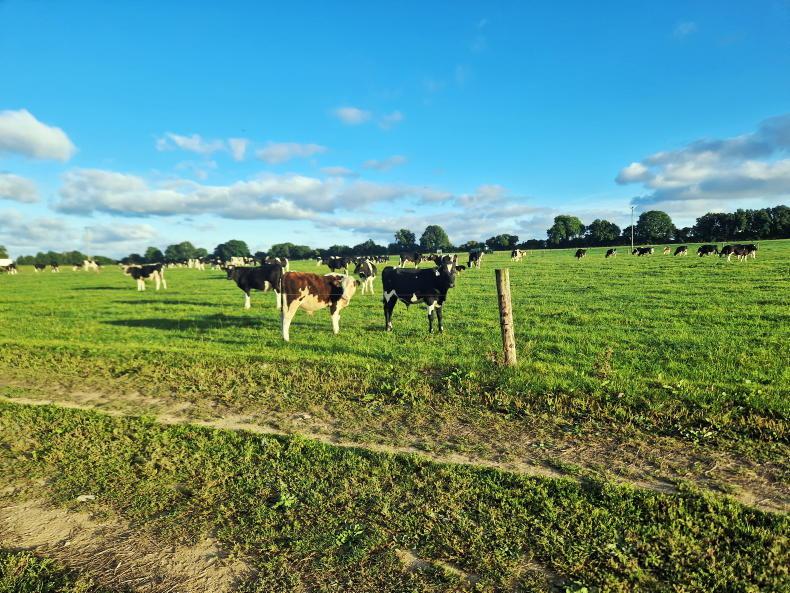
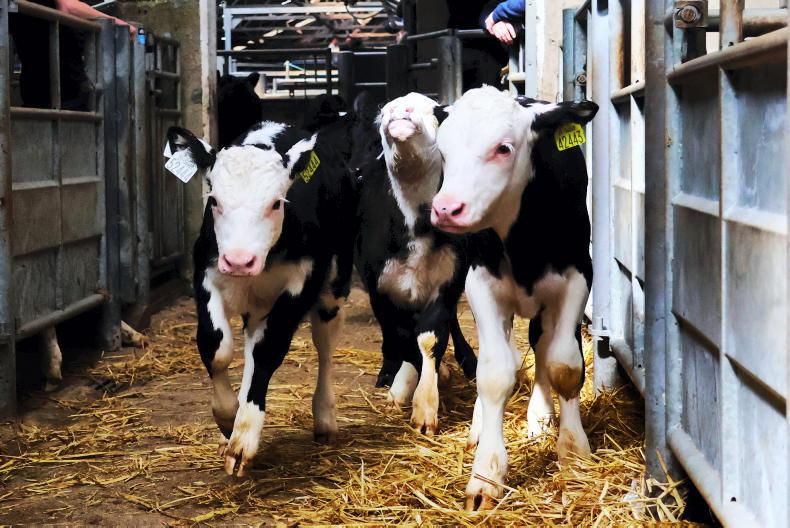
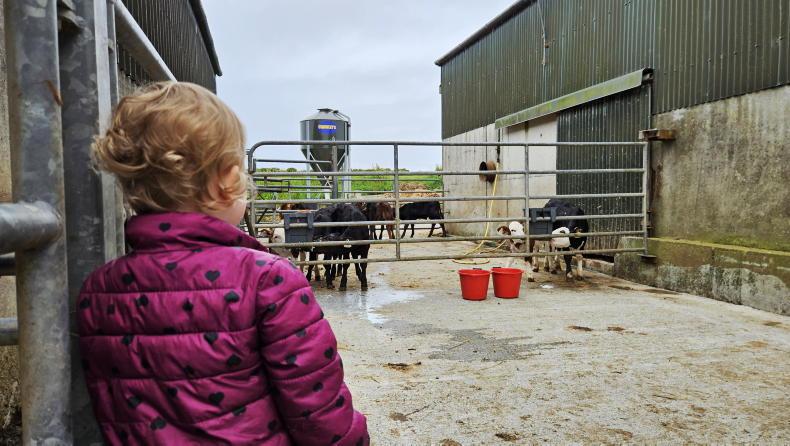
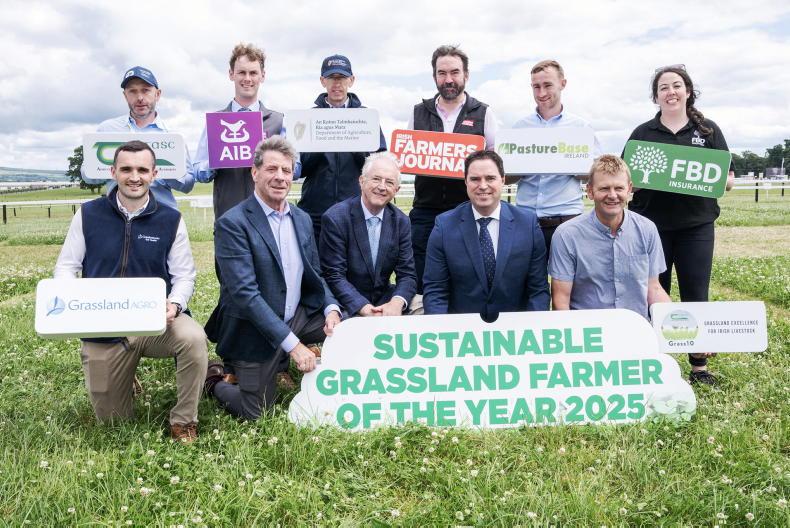

SHARING OPTIONS